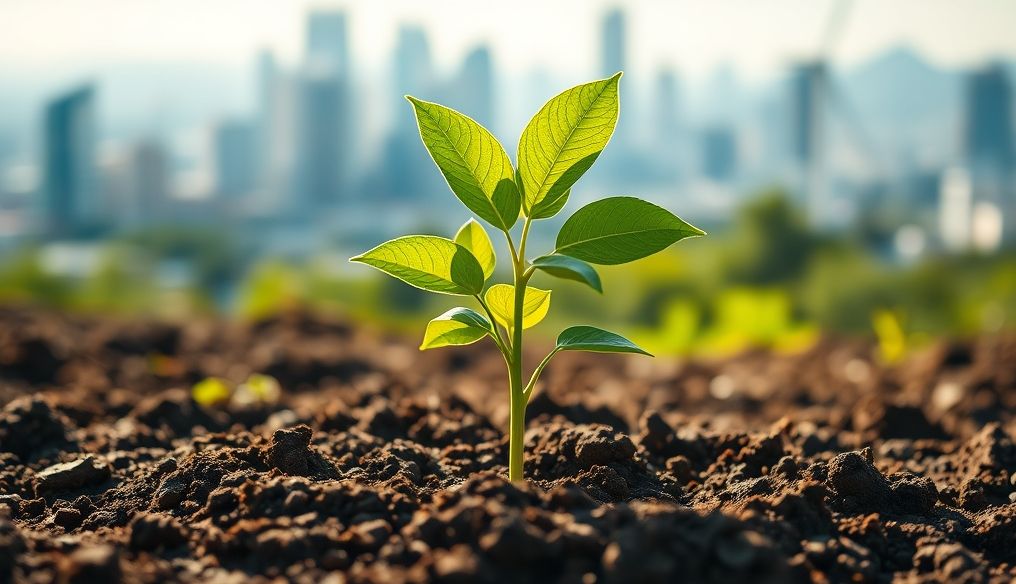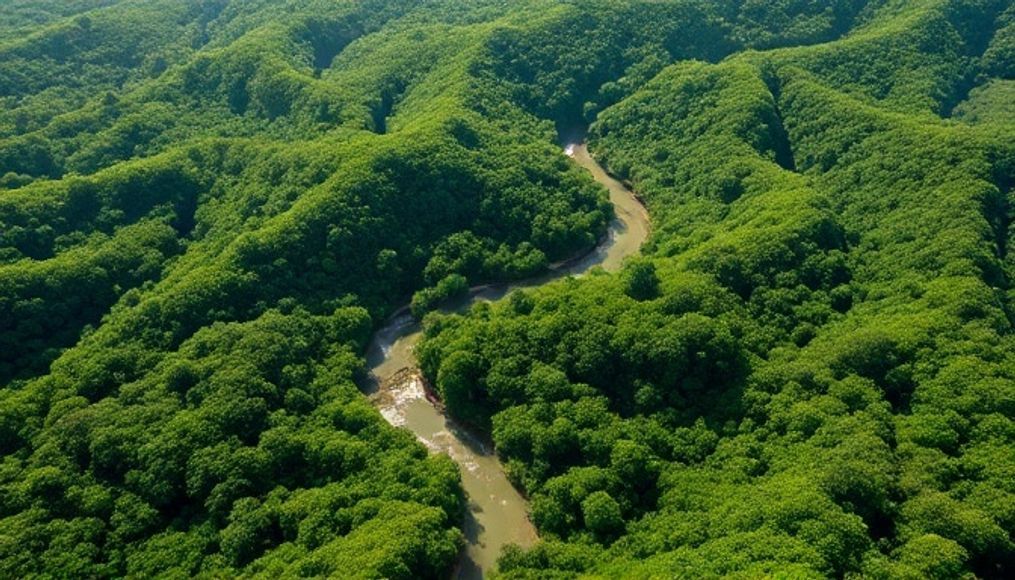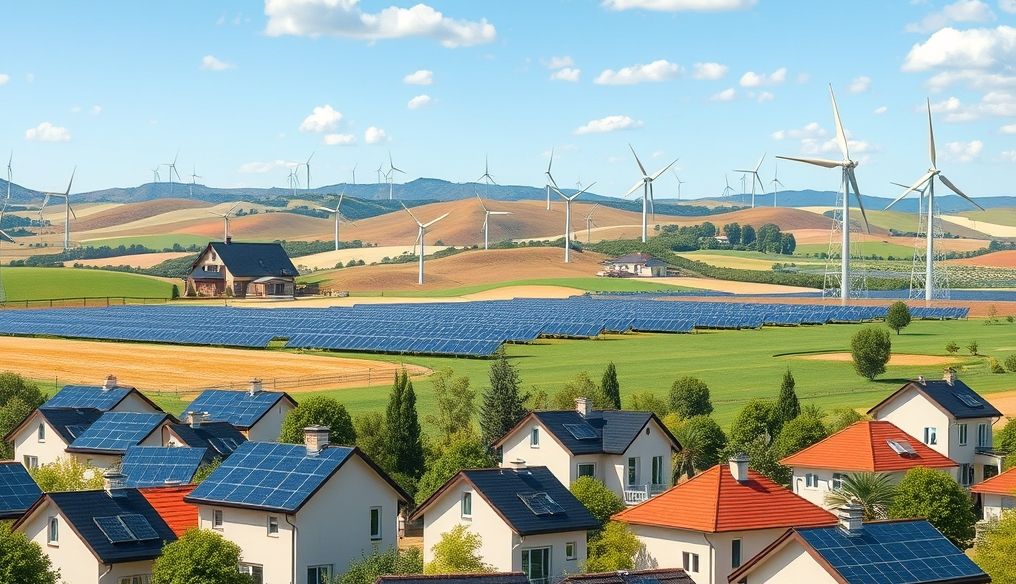How Does Planting a Single Tree Contribute to Improving the Planet?
It may seem simple, but planting a single tree can make a significant difference to the health of our planet. From improving air quality to supporting biodiversity, trees play a vital role in environmental conservation. In this article, we will explore in detail how planting a single tree contributes to improving the planet, covering various aspects such as health, environment, economy, and society.
Chapter 1: Trees and Health - Cleaner Air and Better Life
Trees are natural air purifiers. They absorb carbon dioxide (CO2), a major greenhouse gas contributing to climate change, and release oxygen (O2) necessary for human and animal life. Additionally, trees filter other pollutants from the air, such as particulate matter and ozone, improving air quality and reducing respiratory problems.
Air Purification:
- Absorption of Carbon Dioxide: Trees help reduce the concentration of greenhouse gases in the atmosphere, contributing to the fight against climate change.
- Oxygen Production: Trees provide the oxygen we breathe, which is vital for human and animal health.
- Filtering Pollutants: Trees act as natural filters, absorbing harmful pollutants such as ozone, particulate matter, and nitrogen oxides.
Health Benefits:
- Reducing Respiratory Problems: Clean air reduces the risk of respiratory diseases such as asthma and bronchitis.
- Improving General Health: Studies have shown that living in areas with more trees is associated with improved general health and longevity.
- Reducing Stress: Spending time in nature, especially among trees, can reduce stress levels and improve mental health.
Chapter 2: Trees and the Environment - Protecting Biodiversity and Reducing Erosion
Trees are home to many living organisms, from insects and birds to mammals. They provide food and shelter for these creatures, helping to support biodiversity. Additionally, trees help protect the soil from erosion by anchoring their roots in the ground, reducing the risk of floods and landslides.
Supporting Biodiversity:
- Providing Shelter: Trees provide shelter for many animals, including birds, squirrels, and insects.
- Providing Food: Trees produce fruits, nuts, and seeds that are an important food source for many animals.
- Supporting Food Webs: Trees play a vital role in supporting complex food webs in ecosystems.
Protecting the Soil:
- Preventing Erosion: Tree roots stabilize the soil, reducing the risk of erosion from wind and water.
- Improving Soil Quality: Fallen leaves from trees contribute to improving soil quality by adding organic matter.
- Reducing Floods: Trees help absorb rainwater, reducing the risk of floods.
Chapter 3: Trees and Climate - Combating Climate Change and Cooling the Air
Trees play a crucial role in regulating the climate. In addition to absorbing carbon dioxide, trees help cool the air through evaporation. When water evaporates from tree leaves, it absorbs heat from the surrounding air, leading to cooling. This cooling effect can be particularly beneficial in urban areas, where trees can help reduce the impact of "urban heat islands."
Combating Climate Change:
- Reducing Greenhouse Gases: By absorbing carbon dioxide.
- Carbon Storage: Trees store carbon in their wood, leaves, and roots, preventing its release into the atmosphere.
- Reducing the Impact of Urban Heat Islands: Trees help cool cities by evaporation, reducing the need for air conditioning.
Cooling the Air:
- Providing Shade: Trees provide shade that protects us from direct sunlight, helping to cool homes and buildings.
- Cooling the Air: Through evaporation.
- Reducing Energy Use: By cooling buildings, trees can reduce the need for air conditioning, saving energy and reducing carbon emissions.
Chapter 4: Trees and Water - Improving Water Quality and Managing Resources
Trees play an important role in the water cycle. They help absorb rainwater and prevent surface runoff, reducing the risk of floods and soil erosion. Additionally, trees filter water, removing pollutants and improving water quality.
Improving Water Quality:
- Filtering Pollutants: Trees absorb pollutants from the soil and water, improving water quality.
- Preventing Runoff of Polluted Water: Trees help prevent the runoff of polluted water into rivers and lakes.
- Protecting Water Sources: Trees help protect water sources by reducing erosion and purifying water.
Managing Water Resources:
- Absorbing Rainwater: Trees help absorb rainwater, reducing the risk of floods.
- Preventing Surface Runoff: Trees help prevent surface runoff, reducing the risk of erosion.
- Recharging Groundwater: Trees help recharge groundwater by allowing rainwater to seep into the ground.
Chapter 5: Trees and the Economy - Sustainable Economic Benefits
In addition to environmental and health benefits, trees can have significant economic benefits. Trees can increase property values, provide jobs in areas such as gardening and forest management, and provide valuable products such as wood and fruit.
Increasing Property Values:
- Improving Aesthetic Appeal: Trees enhance the beauty of landscapes, making properties more attractive.
- Providing Shade: Trees provide shade that protects homes and buildings from direct sunlight, reducing air conditioning costs.
- Improving Air Quality: Clean air increases the attractiveness of properties.
Providing Job Opportunities:
- Gardening: Planting and maintaining trees requires the skills and expertise of gardeners.
- Forest Management: Managing forests requires the skills and expertise of foresters.
- Wood Industry: Trees provide wood that is used in the manufacture of furniture, construction, and paper.
Providing Valuable Products:
- Wood: Wood is used in a wide range of applications, from construction to furniture.
- Fruit: Many trees produce fruit that can be sold or consumed directly.
- Nuts: Some trees produce nuts that are an important food source.
Chapter 6: Trees and Society - Promoting Social Well-being and Cohesion
Trees can play an important role in promoting social well-being and community cohesion. They can create attractive public spaces where people can gather and relax. Additionally, trees can foster a sense of community pride and strengthen social bonds.
Promoting Social Well-being:
- Providing Attractive Public Spaces: Trees create attractive public spaces where people can gather and relax.
- Improving Mental Health: Spending time in nature, especially among trees, can improve mental health and reduce stress.
- Encouraging Physical Activity: Parks and gardens with trees provide opportunities for physical activity.
Promoting Community Cohesion:
- Creating a Sense of Community Pride: Trees can foster a sense of community pride and strengthen social bonds.
- Encouraging Community Participation: Tree planting projects can bring people together to work towards a common goal.
- Providing Opportunities for Education: Trees can provide opportunities for education about the environment and sustainability.
Chapter 7: Planting a Single Tree - Practical Steps to Make a Difference
Planting a single tree is a simple process that anyone can do. However, it is important to plan carefully to ensure the tree's success. Here are some practical steps to follow:
- Choosing the Right Tree: Select a tree that is suitable for the climate and soil in your area.
- Choosing the Right Location: Choose a location that provides the tree with enough sunlight and space to grow.
- Digging the Planting Hole: Dig a hole that is wider and deeper than the tree's root ball.
- Planting the Tree: Place the tree in the hole and fill it with soil.
- Watering: Water the tree regularly, especially during the first few months after planting.
- Maintenance: Prune the tree regularly and remove weeds.
Chapter 8: Challenges and Solutions in Tree Planting
Despite the many benefits of tree planting, there are also some challenges that must be overcome. These challenges include lack of space, lack of resources, and resistance to change. However, there are also many solutions available, such as planting trees in urban areas, providing financial support for tree planting projects, and educating people about the benefits of trees.
Challenges:
- Lack of Space: It can be difficult to find enough space to plant trees in urban areas.
- Lack of Resources: It can be difficult to obtain the resources needed to plant and maintain trees.
- Resistance to Change: Some people may resist tree planting due to concerns about costs or inconvenience.
Solutions:
- Planting Trees in Urban Areas: Trees can be planted in parks, gardens, and along streets in urban areas.
- Providing Financial Support: Governments and non-profit organizations can provide financial support for tree planting projects.
- Educating People: People can be educated about the benefits of trees through media campaigns and educational programs.
In conclusion, planting a single tree is a simple act that can make a significant difference to the health of our planet. From improving air quality to supporting biodiversity, trees play a vital role in environmental conservation. By planting trees, we can help combat climate change, improve water quality, and promote social well-being and community cohesion. Let's start today by planting a single tree for a better future.




